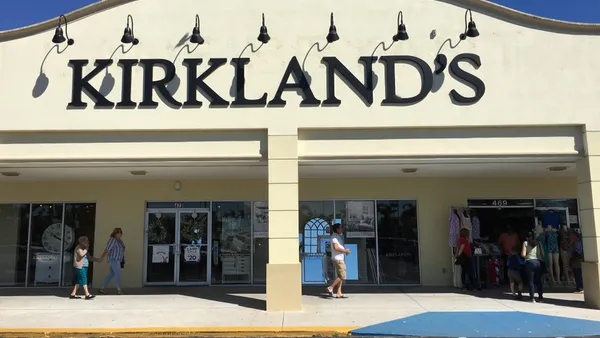Dive Brief:
-
Target is in the midst of testing two ideas to come out of its “Food + Future coLab,” a project teaming the retailer with the Massachusetts Institute of Technology and design firm IDEO on urban farming and other food-related research.
-
The first effort, dubbed “Good & Gather,” changes up the traditional food marketing and grocery display approach of listing ingredients, marking them boldly and clearly on the front of the package rather than in small type on the back.
-
The second allows consumers to scan fresh fruits and vegetables to discover the produce’s nutritional information and to pay based on state of freshness.
Dive Insight:
The grocery business is an especially tough one, with slim margins and tricky loss prevention challenges. Yet both Target and Wal-Mart have focused much of their energies on boosting their grocery offerings, including more organic and healthier foods.
In order to get a handle on loss prevention (which includes spoilage), and in order to take on the competition in a space with so little wiggle room, Target has opted to try find a way to disrupt grocery.
“It’s hard to believe we just opened this coLab in January,” Greg Shewmaker, a member of Target Entrepreneurs-in-Residence (a team tasked with launching new businesses), said in the company’s blog update. “In a short period of time, we’ve already developed a pipeline of concepts ready for testing, we’re building disruptive technologies and—most important—we’re closer than ever to helping people know more about what’s in their food.”
While scanning fresh vegetables has a wow factor with some consumer appeal, flipping of labels could be especially disruptive. For years nutritionists have nearly begged Americans to read labels and to buy as many “whole foods”—items that have fewer ingredients and more recognizable ones—as possible. While some ingredients that sound overly chemical and unhealthy are actually innocuous, must of the time foods with a long list of ingredients that includes unhealthy additives or other dubious ingredients are best left on the shelf. Many consumers are also increasingly concerned about GMO ingredients in food.
Bringing that list to the forefront would make reading the ingredients nearly automatic, rather than a chore for just the persnickety. It’s a neat trick that could force the competition to do something similar or stock foods with fewer questionable components.
Earlier this month, Target refreshed its “Made to Matter—Handpicked by Target” merchandise line, announcing 100 new products in the food, baby, beauty, and household supplies categories, mostly third-party brands. Requirements for Made to Matter items include reduced waste and packaging, closed-loop production, no additives or harsh chemicals, food that meets dietary and allergy restrictions, and reduced sugar.
Made to Matter, launched in 2014, is not a huge money-maker for Target, although the retailer hit its 2015 goal of $1 billion in sales. In addition, brands included in last year’s Made to Matter collection saw about 30% sales growth on average, 1.5 times faster than other categories. Target said that moving forward, the Made to Matter line will employ a stricter set of requirements designed to guarantee that all products within the assortment are more relevant to shoppers and healthier for the environment.














